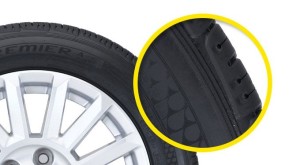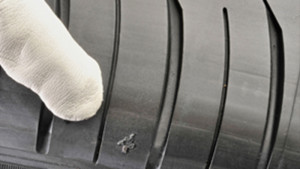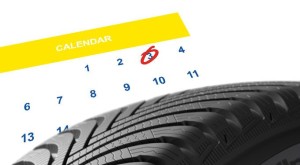What damages tyres?
Physical factors:
-Age
-Wear and damage
Road conditions:
-Potholes, obstacles, curbs, sharp objects, speed bumps
Climate:
-Extreme temperatures
-Rain, snow and ice
-Oil, grease and other chemicals
-Strong sunlight and ozone
Driving habits:
-Speeding
-Quick starts and emergency braking
-Driving on damaged roads
-Failure to notice a change in handling, noise or vibration
-Failure to consult a professional when something changes
Neglecting basic tyre maintenance:
-Air pressure
-Not routinely checking for wear or damage
-Alignment and rotation
-Not going to a professional to remove or fit tyres in case of damage or after an impact
-Not balancing tyres after they are installed
-Improper tyre storage
-Use of sealants that have not been approved
Improper usage:
-Mixing tyre types
-Using tyres on damaged, distorted or modified wheels
-Using wheel and rim sizes that are not compatible
-Fitting tyres that do not have a speed capability and load index at least equal to or higher than those originally specified by the vehicle manufacturer
-Re-inflating a tyre that has been run flat or seriously under inflated
-Using a spare tyre of a different size at speeds in excess of 80 km per h

Is my tyre worn out?
We recommend to replace your tyre if:
-The tread is worn beyond the recommended tread depth levels
-The sidewall is damaged
-Any hole in the tread is greater than 6 mm in diameter
-The bead is damaged or deformed (the bead is the edge of the tyre that sits on the wheel)
Inspect your tyre regularly and look for:
-Uneven tread wear
-Shallow tread
-Troublemakers (rocks, nails, etc.)
-Damaged areas
-Damaged valve caps
Pay attention to the “feel” of your tyres as you drive.
-A rough ride may indicate tyre damage or excessive wear.
-If you notice vibrations or other disturbances while driving, immediately reduce speed, drive with caution until you can safely pull off the road and stop, and inspect your tyres.
-If a tyre is damaged, deflate it and replace it with your spare. If you do not see any tyre damage and cannot identify the source of the vibration, take the vehicle to a tyre dealer for a thorough inspection.
See a professional
If you see something you’re not sure about during your inspection, have it examined by your tyre dealer.
How do I inspect my tyre?
Check your air pressure
-It’s quick and can prevent many problems
-Do it once a month
Check the tread wear with one of the two methods:
-With a tread depth gauge
-With the tread wear indicators
Inspect your tyres for wear and damage problems
-Check your sidewall for any punctures or bumps and the tread to see if the tyres are wearing evenly
-Be sensitive to any changes in handling or steering
When should I inspect my tyres?
-Once every month
-Before you go on a long road trip.
Next steps :
-Any visible perforation, cut or deformation must be checked thoroughly by a tyre professional.
-Only a tyre professional can tell you if your tyre can be repaired or has to be changed.
Spare tyre: can I use it on a day-to-day basis?
No.
Temporary spares have lighter construction to limit their weight on your vehicle so they don’t have the same speed or mileage capabilities. This could affect your vehicle’s stability. The only exception is if your spare tyre is actually a fifth full-size tyre that exactly matches the tyres on your vehicle.
LinkedIn: https://www.linkedin.com/company/finixx-global-industry-co-ltd-?trk=company_logo


